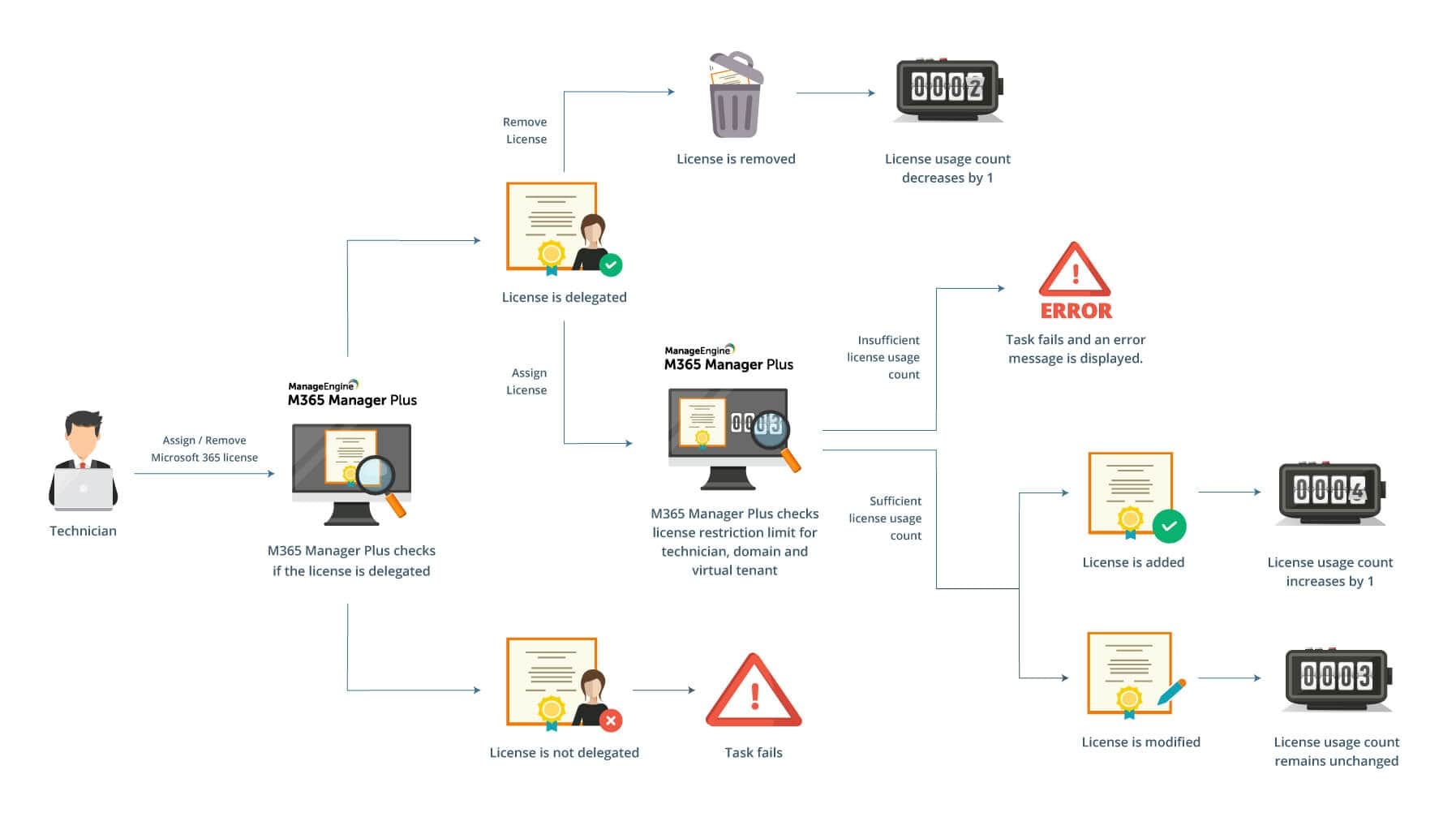M365 License delegation
The license delegation feature helps effectively manage the Microsoft 365 licenses delegated to technicians. You can limit license usage by technician, domain, and virtual tenant.
Technician-based: Admins can delegate selective licenses to a technician and limit the technician's usage count. For example, if the admin has delegated 15 Exchange Online licenses to technician A, then technician A cannot assign more than 15 Exchange Online licenses to users.
Domain-based: Admins can delegate selective licenses for a domain and limit their usage count for the domain. For example, if the admin has allocated 10 Microsoft Sway licenses to domain A, then a technician cannot assign more than 10 Microsoft Sway licenses for the users in domain A.
Virtual-tenant-based: Admins can delegate selective licenses for a virtual tenant and limit their usage count for the virtual tenant. For example, if the admin has allocated 10 Power BI licenses to virtual tenant A, then a technician cannot assign more than 10 Power BI licenses to the users in virtual tenant A.
Note: When all the three restrictions are in place and if the task does not comply with even one of these conditions, then the task will fail with an error message.
Eg: For a license technician-based delegation, the limit is 10 and the limit for virtual-tenant-based is 50. If that technician used all the count on the virtual-tenant, there will be 0 licenses remaining for Technician and 40 for the virtual-tenant. Here this technician can't assign this license even though the virtual-tenant has 40 remaining.
License delegation workflow

- A technician can assign or remove the Microsoft 365 license of a user using the M365 Manager Plus portal.
- When a technician tries to assign a license to a user, M365 Manager Plus will check if the selected license has been delegated to the technician.
- If the technician has not been delegated with the license, the task will fail.
- If the license is delegated to the technician, then license delegation limits of the technician, the domain of the user, and the virtual tenant selected will be checked.
- The above step needs to be done before the user is assigned the license.
- When the number of licenses available for delegation is lower than the licenses the admin is attempting to delegate, the task fails and an error message is displayed.
- If there are enough licenses to delegate, then the task will take place and the user will be assigned the delegated license.
- If the license is successfully added to the user, then the license usage count increases by one.
- If the user already has that particular license, then the task will be considered a modification and the license usage count remains the same.
- If the task was to remove the license assigned to a user, then the license usage count will decrease by one once the task is executed.
Note: For selecting a virtual tenant during task execution, the technician can select a specific virtual tenant to which the user belongs or select the Default Virtual Tenant. If the technician selects the Default Virtual Tenant and the user falls under multiple virtual tenants, then the virtual tenant with the highest order of precedence will be automatically selected by the product. For example, if a user falls under virtual tenants A, B, and C and virtual tenant B has the highest order of precedence, then virtual tenant B will be automatically selected.
